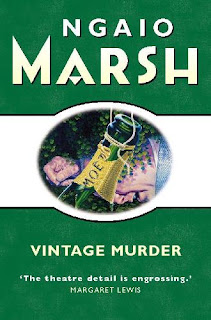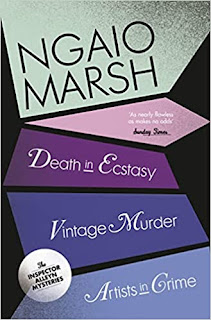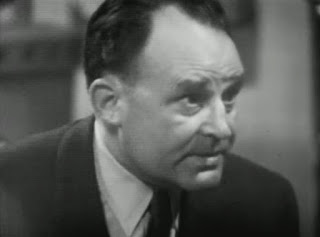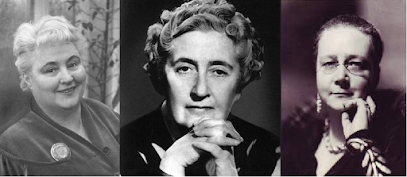The story of a theatrical entertainment that starts with a bang
 |
| Ngaio Marsh was one of the four 'Queens of Crime' in detective fiction's Golden Age |
In Overture to Death, when the main characters get together at a meeting at the village Squire’s house to plan an amateur theatre production to raise money for a new church piano, it becomes obvious to the reader that the story can end in only one way…
In this eighth Chief Inspector Alleyn novel, Ngaio Marsh draws on her own theatrical background when she describes the preparations the organisers make for the performance of a play in the Parish Hall in the vale of Pen Cuckoo in Dorset.
She sets the stage cleverly, giving examples of the extent of the rivalry between the two old women in the past and how far they are prepared to go to get the rector’s attention.
Her characterisation of the spinsters is excellent as she reveals how both women disapprove of the blossoming relationship between the Squire’s son, Henry, and the rector’s daughter, Dinah, who is a young professional actress.
The artist, Agatha Troy, does not appear in this novel, published in 1939, but she is always present in the background.
After the explosive murder scene, Detective Chief Inspector Alleyn and Detective Inspector Fox are sent by Scotland Yard to investigate.
Ngaio includes a letter Alleyn writes to Troy, while he is away from London working on the case, in which he reveals that they are engaged and speculates on what their marriage will be like.
 |
| The HarperCollins 2001 edition of the 8th Inspector Alleyn mystery |
Ngaio Marsh, who died on 18 February 1982 in her native New Zealand, contributed to both art and the theatre during her life. She was also judged to be one of the four Queens of Crime during the Golden Age of detective fiction.
Her 32nd and final crime novel, Light Thickens, was completed only a few weeks before her death. The story revolves around one of her greatest theatrical passions, Shakespeare’s play, Macbeth.
Ngaio began writing detective novels in 1931 after moving to London to start up an interior decorating business. The idea for her first crime novel, A Man Lay Dead, came to her when she was living in a basement flat off Sloane Square.
In the preface to an omnibus edition of her first three novels - A Man Lay Dead, Enter a Murderer and The Nursing Home Murder - Ngaio describes how she came up with the character of Detective Inspector Roderick Alleyn.
It was a wet Saturday afternoon and she had been reading a detective story borrowed from a library, although she says she couldn’t remember whether it was ‘a Christie or a Sayers.’ After she finished it, she wondered whether she could write something similar and braved the rain to go to a stationer’s shop to buy exercise books, a pencil, and a pencil sharpener.
She sat down to write what was to be the first of a series of crime novels featuring the gentleman detective Roderick Alleyn. Her fictional detective works for the Metropolitan Police in London even though he is the younger brother of a baronet. She named him after an Elizabethan actor, Edward Alleyn.
Several
of her novels are set in the world of the theatre, which she knew well because
she was a times an actress, director, and playwright.
I would recommend Overture to Death as a good example of a classic Golden Age mystery set in a respectable English village. It stands out because of its clever plot, which involves a highly ingenious and shocking murder method.

.jpg)













